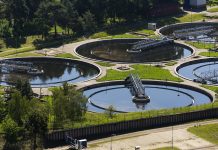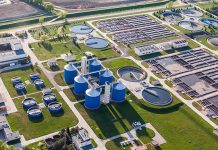We hear a lot about them, and increasingly all of our lives are being affected by them. What might they mean for water management?
In this article I’m focusing on the drainage networks that we rely on to live as we do in a highly urbanised society. Imagine living without sewers and road drainage to take away our waste and the runoff when it rains. But how much do we really know about these systems – where they are, what maintenance do they need to remain serviceable, how long they will last, how will they cope with increases in population and a changing climate? Worryingly, the answer is ‘surprising little’.
That’s not to say the industry has not made a lot of progress. In the last 50 years we have seen innovations such as CCTV to capture images of the inside of sewer pipes, sophisticated computer models to predict the hydraulic performance of networks, and computer databases replacing paper sewer records. Where these good things mostly fail, however, is to recognise that sewer networks are not static entities – they change over time. Their serviceability changes as sediment is moved around the system affected by high and low flows during wet and dry weather. Their condition changes as they deteriorate structurally, in response to intrinsic and extrinsic influences that we can’t predict. The flow in them changes as areas are urbanised or redeveloped, as populations age through rearing families through to living alone in old age, as water saving measures reduce dry weather flow and as rainfall patterns change.
Not only is the sewer system a hugely valuable asset that allows us to live in urban centres as we do. It is also a very expensive asset, probably well in excess of £500bn replacement value. It accounts for 68% of the total value of the regulated water companies’ infrastructure and non-infrastructure assets. Wholesale replacement would be unthinkable, so it is timely that as a nation we are now addressing sustainable futures for these national assets. In 2016, UK Governments’ Department for Environment, Food & Rural Affairs (Defra) published ‘Creating a great place to live’, its strategy to 2020, including enabling resilience in the water sector. Defra now expects sewerage companies to understand the condition of their assets, including any deterioration. In just three sentences, in paragraph 48 of their strategy document, Defra have articulated the reason why big data and analytics will be key tools for managing sewer networks – water companies will have to understand the condition of their assets and their rates of deterioration. Focussing attention only on the 20% so-called ‘critical’ sewers and letting the rest go hang will no longer do. Defra recognises that better data will be needed to support the process. New technology to replace the old ‘snapshot’ methods of data collection such as CCTV surveys and short-term flow surveys should now be embraced.
A good example of the current state of the art in data and analytics for sewer and drainage networks, is Acoustic Sensing Technology’s SewerBatt™ Vision system. SewerBatt Vision™ is being used by water companies, highways and rail network managers to quickly and economically gather data about the whole of their systems not once, but repeatedly. The acoustic data is collected in a few minutes, processed automatically into information about the pipe and then immediately sent to the Cloud. From here, utilities can plan both immediate and longer-term evidence-based intervention strategies, and a number of asset owners are already using SewerBatt™ Vision in rolling, long term programmes to routinely inspect all of their drainage assets. Through better understanding of what condition their drainage assets are in and how they are changing, utility companies no longer have to rely on fixed-interval scheduled maintenance programs, and can move towards a ‘just in time’ maintenance strategy instead of a ‘just-too-late’ clearing up visit after the flood.
What does this mean for the utility companies? They hold the liability of ensuring these vast infrastructure networks provide the required levels of service to their customers and to the environment. Systems like SewerBatt™ Vision that through data and analytics provide actionable insights into the performance of entire networks and how it changes over time will become the norm for asset management. This will allow utility companies to plan their investment decisions from a position of strength. One of the most important things that the big data revolution facilitates is the breaking down of data silos. The best insights come from combining different data sets. SewerBatt™ Vision can combine serviceability data with other whole-network data such as the consequences of failure. Big data analytics that take account of which pipes are losing serviceability combined with consequence data about which buildings would be flooded, which roads and to what depth and where pollution will occur will become routine. This will allow utility companies to focus investment not just on the worst pipes or where the consequence of failure is greatest. Instead, a true risk-based approach will give the best value for customers and the utility companies. Regulators impose severe penalties for failure to perform. SewerBatt™ Vision empowers utility companies to be in control of outcomes.
Richard Long
Chief Technology Officer
Acoustic Sensing Technology Ltd







